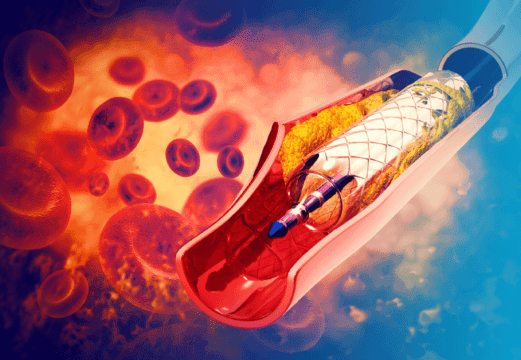Advanced stages of peripheral artery disease cause significant limitations in patients, such as critical limb ischemia (CLI), which manifests with resting pain and gangrene or ulcers of difficult resolution. Uncontrolled progression of this pathology might lead to major amputation, reduced life expectancy and increased healthcare costs.

Prior research on infrapopliteal territory have shown contradicting results. The pragmatic study BEST-CLI revealed that revascularized patients (younger than 80 and with no kidney failure) with adequate saphenous vein grafts experienced fewer events vs. conventional PCI. On the other hand, the recent BASIL-2 showed that patients with infrapopliteal disease surgically revascularized presented higher risk of amputation (HR 1.35).
Infrapopliteal angioplasty presents certain limitations, such as plaque recoil, flow limiting dissection and restenosis, which might compromise intervention durability. The LIFE-BTK trial aims as assessing the safety and efficacy of an everolimus-eluting resorbable scaffold, which presents advantages such as an adequate mechanical profile and the release of anti-proliferative drugs for the treatment of CLI.
Read also: Long-term Results of Coronary Bifurcation Lesion Treatment in Diabetic Patients.
LIFE BTK was a randomized, multicenter study (carried out in 6 countries) using an everolimus-eluting resorbable scaffold (ESPRIT BTK, Abbott). It included patients over 18, with CLI and infrapopliteal disease (stenosis or occlusion). Patients were randomized 2:1 to Esprit BTK or conventional PCI, and received antiaggregant with aspirin and one maintenance dose of P2Y12 inhibitor (DAPT was maintained for one year in the Esprit BTK group and one month in the PCI group).
Successful procedure was defined as residual stenosis ≤30%, with same or better runoff vs. periprocedural images, with no residual dissection and no vascular complications. Efficacy primary end point was freedom from events at one year (above the ankle amputation, target vessel occlusion, target lesion revascularization and binary target vessel restenosis. Safety primary end point was freedom from major adverse events, (supracondylar amputation and reintervention) at 6 months and perioperatory death (within 30 days).
From July 2020 to September 2022, the study included 261 patients; 173 were randomized to Esprit BTK and 88 to PCI. Mean age was 72.6 ± 10.1 years, with 32% women. 52% were in Rutherford-Becker class IV and 48% were class V. Angiographically, lesions were 43.8 ± 31.8 mm in the Esprit BTK arm and 44.8 ± 29.1 in the PCI arm. Success rate was 91% with Esprit BTK and 70% with PCI, with 6% bailout stenting rate.
89% of patients were followed up at one year. The efficacy end point presented a 30% difference in favor of Esprit BTK (CI 95%, 15 to 46, p ≤ 0.001). The safety end point was observed in 165 of the 170 patients in the Esprit BTK arm and 100% in the PCI arm (absolute difference -3%, CI 95% -6 a 0; p ≤ 0.001 for non-interiority). As regard the scar, wound healing rate was 45% at one year, with a healing time of 196.7 ± 130.1 days.
Conclusions
LIFE-BTK outcomes indicate that, in patients with CLI and infrapopliteal disease, the incidence of efficacy primary end point (freedom from above the ankle amputation and target vessel reintervention) was higher in the bioresorbable scaffold group. However, when looking at adverse events, outcomes resulted non-inferior.

Dr. Omar Tupayachi.
Member of the Editorial Board of SOLACI.org.
Original Title: Drug-Eluting Resorbable Scaffold versus Angioplasty for Infrapopliteal Artery Disease.
Reference: Varcoe RL, DeRubertis BG, Kolluri R, Krishnan P, Metzger DC, Bonaca MP, Shishehbor MH, Holden AH, Bajakian DR, Garcia LA, Kum SWC, Rundback J, Armstrong E, Lee JK, Khatib Y, Weinberg I, Garcia-Garcia HM, Ruster K, Teraphongphom NT, Zheng Y, Wang J, Jones-McMeans JM, Parikh SA; LIFE-BTK Investigators. Drug-Eluting Resorbable Scaffold versus Angioplasty for Infrapopliteal Artery Disease. N Engl J Med. 2024 Jan 4;390(1):9-19. doi: 10.1056/NEJMoa2305637. Epub 2023 Oct 25. PMID: 37888915.
Subscribe to our weekly newsletter
Get the latest scientific articles on interventional cardiology





